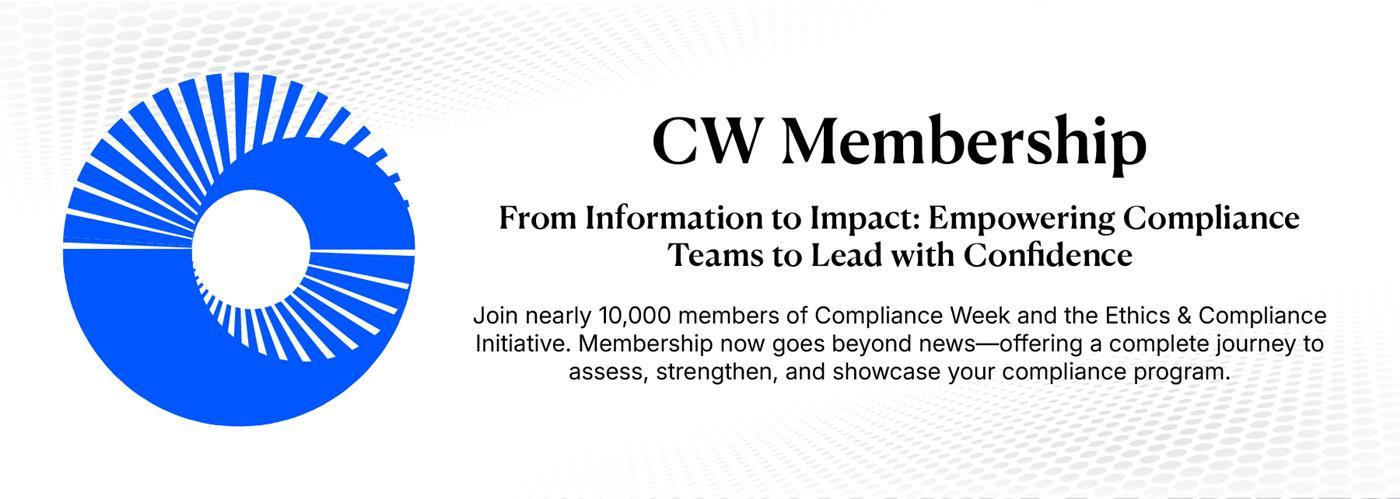- Home
-
News
- Back to parent navigation item
- News
- National Compliance Officer Day 2025
- Accounting & Auditing
- AI
- AML
- Anti-Bribery
- Best Practices
- Boards & Shareholders
- Cryptocurrency and Digital Assets
- Culture
- ESG/Social Responsibility
- Ethics & Culture
- Europe
- Financial Services
- Internal Controls
- Regulatory Enforcement
- Regulatory Policy
- Risk Management
- Sanctions
- Surveys & Benchmarking
- Supply Chain
- Third Party Risk
- Whistleblowers
- Opinion
- Benchmarking
- Certification
- Events
- Research
- Awards
-
CW Connect
- Back to parent navigation item
- CW Connect
- Sign In
- Apply
- Membership
Stop normalizing the gender pay gap
By  Aly McDevitt2021-11-17T13:00:00
Aly McDevitt2021-11-17T13:00:00

Our “Inside the Mind of the CCO” survey revealed women in compliance were paid far less than men. In a profession where practitioners are hailed as paragons of ethical integrity, why is this OK?
THIS IS MEMBERS-ONLY CONTENT
You are not logged in and do not have access to members-only content.
If you are already a registered user or a member, SIGN IN now.
Related articles
-
 Premium
Premium‘We have to stop shrinking ourselves’: Strategies for confronting BIPOC bias
2024-06-14T12:08:00Z By Adrianne Appel
Attendees at Compliance Week’s Women in Compliance Summit discussed strategies for confronting bias against Black, indigenous, and people of color professional women working in compliance and risk.
-
 Opinion
OpinionWomen in Compliance Summit proves value of congregating, allyship
2023-07-07T19:14:00Z By Amii Barnard-Bahn
Compliance Week’s inaugural Women in Compliance Summit featured two days dedicated to elevating attendees and addressing some of the unique challenges women face in the profession.
-
 Article
ArticleSurvey: Performance incentives drive general counsel compensation rise
2022-09-23T17:03:00Z By Adrianne Appel
Compensation among general counsel at some of the nation’s top corporations increased about 8.1 percent in 2021, compared to 2020 levels, according to the latest annual benchmarking report from Equilar.
More from Opinion
-
 Opinion
OpinionThe invisible cost of digital defense on mental health
2025-12-26T12:00:00Z By By Timothy Miller, CW guest columnist
Cybersecurity professionals, particularly those in leadership roles, often face immense pressure and stress due to the constant threat of cyberattacks.
-
 Opinion
OpinionFINRA’s GenAI wake-up call: What compliance professionals must do now
2025-12-24T19:04:00Z By Tom Fox
FINRA’s rules are intended to be technologically neutral. They apply when companies use GenAI or similar technologies in their businesses, just as they apply when companies use any other technology or tool. But what does that mean for a compliance professional using GenAI?
-
 Opinion
OpinionHow to identify and mitigate risks posed by Foreign Terrorist Organizations
2025-12-24T18:55:00Z By Michael K. Atkinson and Caroline E. Brown, CW guest columnists
Since Inauguration Day on Jan. 20, 2025, the Trump Administration has made it a priority to expand the list of designated Foreign Terrorist Organizations.
- Terms and Conditions
- Privacy Policy
- Do Not Sell My Info
- © 2025 Compliance Week
Site powered by Webvision Cloud






